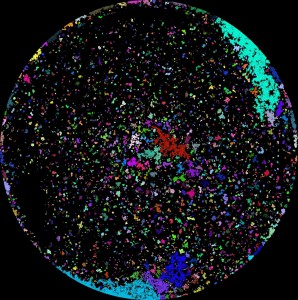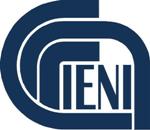Physics of Cancer: the case for specific initiatives in Europe
Caterina La Porta1 & Stefano Zapperi2
1 Department of Biosciences, University of Milano, Italy
2 CNR-IENI, Milano, Italy
Download the position paper as a PDF file
Understanding how cancer initiates, grows and migrates has been a fundamental topic of biomedical research in the past decades and is still the object of intense scientific activity. While traditionally cancer research has relied heavily on the standard tools of biologists, such as biochemistry, genetics and more recently bio-informatics, it is recently becoming apparent that an approach based on physical sciences could provide a new perspective on the problem bringing to the field new ideas and tools. Although contributions to cancer research, grounded on computational models introduced by physicists are starting to emerge, their impact on cancer research is rather marginal. Europe has leading scientists working in computational physics, biophysics and complex systems, but is lagging behind in the knowledge transfer to biomedical research. We believe that this is mostly due to language and cultural barriers that could be overcome by suitable initiatives bridging the gap between these different disciplines. To bridge this gap, we have organized two workshops in Europe:
-
CECAM Workshop on Computational Physics Methods for Cancer, Lausanne June 27-29 2012. http://www.cecam.org/workshop-0-751.html
-
ESF Workshop on Physics of Cancer, Varenna, September 13-15, 2012. http://www.cancerphysics.unimi.it/?page_id=6
Both events were extremely successful, bringing together researchers in computational, theoretical and experimental physics with cancer biologists, mostly coming from EU, to discuss possible new pathways to export methods and ideas from physics to cancer and also strategy to apply together for future grant opportunity.
In the USA the National Cancer Institute hasrecently started to foster initiatives to involve physicists and engineers in cancer research (PS-OC, Physical Sciences Oncology, http://physics.cancer.gov/). No such initiative exists or is planned in Europe, although we have the research potential to be both competitive with and complementary to expertises that are found in the USA. In a recent assessment of physical sciences and engineering advances in life sciences and oncology in Europe, a panel sponsored by The National Institutes of Health (NIH) and the National Science Foundation (NSF) concluded that Europe has worked very well without any specific EU grant plan (http://wtec.org/aphelion/).
After the two workshops we now have a clearer vision of the interdisciplinary research done in EU on this topic.
A major problem that confounds the analysis of tumor progression is the presence of an heterogeneous cell population. It has been suggested that in some tumors the heterogeneity is organized hierarchically, with cancer stem cells at the top of the structure. Another major problem is that it is practically impossible to follow the progression of a tumor in a single patient: we have only limited information at specific times and for different patients. Physicists have developed a set of quantitative tools, both computational and theoretical, to deal with dynamically evolving heterogeneous systems that could be used to improve our understanding of cancer and develop novel strategies to fight it. A similar contribution from physicists could give further strength to the field of “cancer systems biology” that is still in its infancy.
Important contributions to cancer research are coming from different fields of physics, including, among others, biophysics, non-linear physics, soft-condensed matter and the statistical mechanics of complex systems. Soft-condensed matter physics studies materials such as colloids and polymers that have a direct relevance for biology and for drug delivery, so that the distance between the two fields is rapidly shrinking. Methods derived from the statistical mechanics of complex non-equilibrium systems have been applied to a wide variety of biological problems, ranging from protein folding, the analysis of genetic data to the spreading of epidemics, but applications to cancer are more rare: they range from numerical models for genetic data and mutations to cellular automata describing tumor growth. Several other problems in cancer research can be tackled with physics based approach:
-
Angiogenesis is analogous to fractal growth phenomena that have been studied by physicists for decades and indeed physicists are producing large scale computational simulations of this process that also involves mechanical properties.
-
Physicists can model both experimentally and how cancer progression is influenced by mechanical properties of tissues. Recent studies have studied experimentally and theoretically growth of tumors under stress and have analyzed the mechanical forces underlying cell motion.
-
Statistical mechanics of non-equilibrium systems is providing new insight on cancer progression, on the kinetics of cancer stem cells and on tumor initiation.
-
Physicists are improving experimental methods for cell tracking to study cell migration and metastasis.
-
The formation of metastasis and the response of tumor to drugs can be studied mathematically in terms of game theory. The reason why chemotherapy often fails is that a subpopulation of cancer cell become resistant by selection mechanisms. This problem is extremely complex but can be addressed by a physics based approach.
In addition to relevant technical contributions and innovative tools, physicists can bring to the field a new conceptual perspective. Physicists have a long tradition in building phenomenological models that capture the essence of a phenomenon by relatively simple mechanisms. This is not usually done in biological modeling where one typically tries to handle an extremely large number of processes that are then difficult to disentangle.
In conclusion, an interdisciplinary approach blending cancer research with physical sciences appears to be extremely promising and Europe has the scientific potential to lead this emerging field. Unfortunately, however, there are no specific activities available in the EU-FP7 programme and in Horizon 2020, except for the European Research Council (ERC). While the ERC funds interdisciplinary research through synergic grants, this instrument are not appropriate for research networks but fund a very limited number of research groups. ESF Research Networking Programmes, that appeared to represent the natural instrument to coordinate research in this field, are at present unavailable. It should therefore be a high priority for Europe to foster new specific initiatives in this emerging field.
Acknowledgements: We thank R. Austin, M. Ben Amar and E. Domany for useful remarks.
References:
Review articles and perspectives:
-
D. B. Agus and F. Michor The sciences converge to fight cancer. Nature Physics 8, 773-774 (2012)
-
D. Wirtz, K. Konstantopoulos, P. C. Searson, The physics of cancer: the role of physical interactions and mechanical forces in metastasis, Nature Reviews Cancer 11, 512-522 (2011)
-
A. Frisch et al. Are biomechanical changes necessary for tumour progression? Nature Physics 6, 730–732 (2010)
-
A.-S. Smith, Physics challenged by cells, Nature Physics 6, 726–729 (2010)
Other papers:
-
L. Ein-Dor, O. Zuk and E. Domany, Thousands of samples are needed to generate a robust gene list for predicting outcome in cancer. PNAS 103, 5923-5928 (2006).
-
N. Beerenwinkel et al. Genetic Progression and the waiting Time to Cancer. PLoS Comput Biol 3, e225 (2007).
-
S- Torquato, Toward an Ising Model of Cancer and Beyond, Phys. Bio. 8, 015017 (2011).
-
M. Ben Amar et al. , Contour Instabilities in Early Tumor Growth Models, Phys. Rev. Lett. 106, 148101 (2011).
-
M. Welter, K. Bartha and H. Rieger, Emergent vascular network inhomogenities and resulting blood flow patterns in a growing tumor, J. Theor. Biol. 250, 257 (2008).
-
T. M. Koch et al. 3D Traction Forces in Cancer Cell Invasion. PloS ONE 7:e33476, 2012.
-
C. A. M. La Porta, S. Zapperi, J. P. Sethna Senescent Cells in Growing Tumors: Population Dynamics and Cancer Stem Cells. PLoS Comput Biol 8, e1002316 (2012).
-
F. Montel et al., Stress clamp experiments on multicellular tumor spheroids. Phys Rev Lett 107, 188102 (2011)



